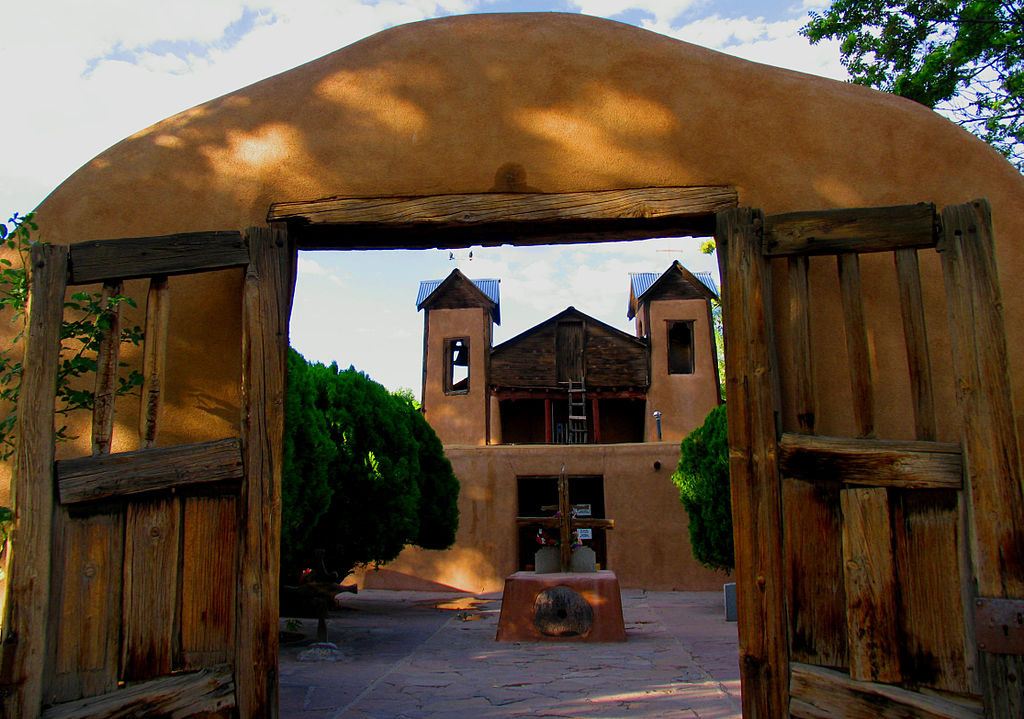Upcoming Events:
Announcing that a pilgrimage group is forming now with accommodation being coordinated at parishes and communities. If interested, please send an email to societyofservantpilgrims@gmail.com. Help with transportation can be coordinated as needed.
13 – 23 September 2024 Chimayó to San Luis
OVERVIEW
This pilgrim route connects two sets of well-known shrines – the Shrine of the Mexican Martyrs and Shrine of the Stations of the Cross in San Luis, Colorado and the Santuario de Chimayó and Santuario de Santo Niño in Chimayó, New Mexico.
The 105-mile route passes through many unique cultural zones and areas of exceptional rugged beauty, including the Taos Pueblo. The pilgrimage can be done in either direction.
San Luis is home to the Shrine of the Mexican Martyrs and the Stations of the Cross Shrine. There is a large chapel midway up a mesa against a backdrop of several of Colorado’s 14ers, including the spectacular Blanca Peak. It is an ideal destination for a foot pilgrimage. One hundred and five miles to the south lies the Santuario de Chimayó in northern New Mexico, comprised of los Santuarios de Nuestro Señor de Esquipulas y Santo Niño de Atocha.
MAP
This map is interactive. Click on each pin to learn more about each destination.
ITINERARY
Gathering in Chimayó on an afternoon and spending the night in local pilgrim accommodations, the walking begins after morning Mass. Day 1 involves a walk on the shoulder of the High Road to Taos uphill 9 miles to the village of Truchas. Accommodation is in the church hall. There are no commercial services (e.g. shops, restaurants, or hotels) in Truchas.
Day 2 continues along the roadside for 7 miles to the historic hamlet of Las Trampas. Arrangements can be made in advance to visit the historic adobe church and local morada, a prayer house of the Hermanos Penitentes. There are no commercial services in Las Trampas. Continuing another 7 miles reaches the destination of Peñasco. There is a church on one end of the village and the Guadalupe Center on the opposite end, about a mile further. Accommodation is in the Guadalupe Center.
Day 3 sets out along the High Road to Taos, but deviates onto a rugged Forest Road as the journey continues through the Kit Carson National Forest. The first several miles are uphill; then continuing to an unnamed pass, the road descends rather steeply for many miles into the upper Rio Grande Valley. The landscape is beautifully rugged, but once the route goes off the paved road, there are no amenities at all until Ranchos de Taos is reached. The total distance for the day is 16 miles. The day’s stage ends at the San Francisco de Asis church in Ranchos de Taos, where accommodations can be arranged. Ranchos de Taos is on the outskirts of the town of Taos, where there are amenities and commercial services of every sort.
Day 4 is an easy walking day of only 7 miles, allowing enjoyment of famous and picturesque Taos. Continuing through Taos onto Taos Pueblo, pilgrims with arrangements in advance, can seek accommodation on the historic Pueblo, a UNESCO world heritage site.
Day 5 begins with an escort by the Taos tribal members along their sacred river to the northern border of their sovereign nation. A little further is Arroyo Seco, a touristic artists village with an historic adobe church. Continuing westward toward the main highway allows the path to continue north of the deep gulch in Arroyo Hondo. Accommodation can be arranged in the community hall.
Day 6 ends at the historic adobe church of San Antonio de Padua in Questa. The shorter route of 15 miles is along the highway shoulder; there is a prettier route through the mountains passing through San Cristobal, but it adds several miles. Accommodation is made with the parish. There are a few commercial accommodation options in Questa, as well as a grocery store and several restaurants.
Continuing north on the highway shoulder or alternatively in the grassy verge beside the highway, Day 7’s journey is a flat 16 miles and ends in the village of Costilla, just before the state border between New Mexico and Colorado. The church of Costilla is to the west of the highway; a little further on is the border hamlet of Garcia with a single restaurant that can be opened upon advanced request.
Day 8’s walk is the longest, most rugged, and most beautiful. Although staying on the highway shoulder is an option, a short, steep climb ascends to the top of Wild Horse Mountain, from which glimpses of San Luis and the gleaming white church on the mesa can be caught. Wild mustangs are generally present in the morning. The peaks of the Sangre de Cristo range loom over the San Luis valley. The ruggedness of the wilderness provides the perfect finale to the pilgrimage, particularly the final descent off the mountain into San Luis town after 21 miles for the day. Arrangements can be made for a final Mass either at the parish church in the town center or in the chapel on the mesa between the two shrines of San Luis. Accommodations in San Luis include the parish hall, a rather nice bed & breakfast run by the parish, and a local motel. Several restaurants are in San Luis; however, with limited hours, arrangements should be made in advance to ensure service availability.
The pilgrimage sequence works particularly well to gather in Chimayó on a Saturday afternoon, beginning after Sunday morning Mass, pilgrims arrive the following Sunday afternoon in San Luis. Neither town has public transportation, so arrangements must be made in advance.
CREDENTIALS
San Luis Pilgrimage Credential (Front)
San Luis Pilgrimage Credential (Back)
or
Chimayo Pilgrimage Credential (Front)
Chimayo Pilgrimage Credential (Back)
TESTIMONIALS
coming soon.

